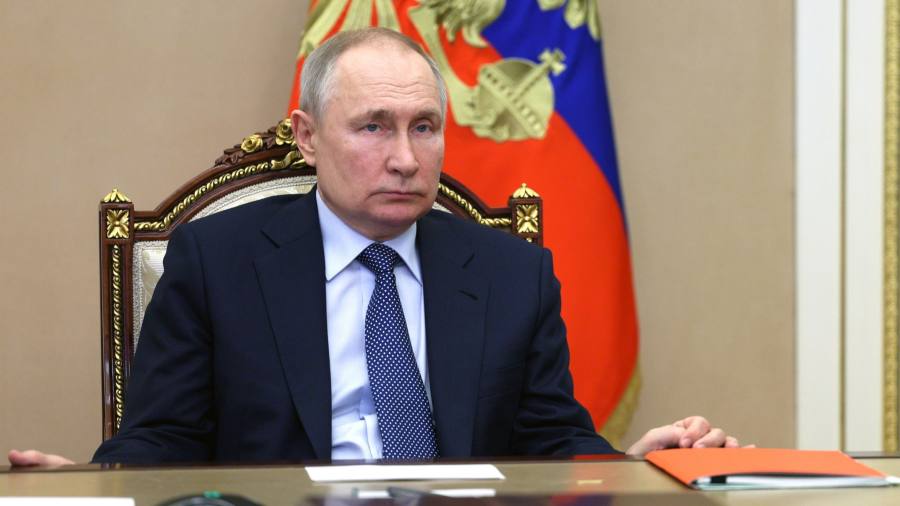
The Kremlin has adopted a new foreign policy doctrine which identifies the US as the “main source of threats” to Russian security while describing Russia as a “distinctive state-civilisation” with a “unique historical mission”.
The document is the first update to the doctrine since 2016 and reflects the “radical changes in the international affairs”, President Vladimir Putin told a meeting of his Security Council on Friday.
Presenting the new strategy, foreign minister Sergei Lavrov said Russia faced an “existential threat” from “unfriendly countries”.
The new doctrine describes the US as the “main source” of security threats to Russia and alludes to an “era of revolutionary changes” towards a “more just multipolar world” — wording intended to reflect the rising power of China under President Xi Jinping.
Putin and Xi agreed to a “no limits partnership” shortly before the Russian president ordered a full-scale invasion of Ukraine last year.
Despite Moscow’s war of aggression against its neighbour, the policy document depicts Russia as “peaceful, open, and predictable”. It accuses the US of using its “special military operation” in Ukraine as a pretext to unleash a “hybrid war” aimed at “weakening and disintegrating Russia”.
Moscow has in recent weeks ramped up tensions with the US and allies. Earlier this month, Putin ordered the stationing of Russian tactical nuclear weapons in Belarus by this summer. And this week, Russian security agents detained Evan Gershkovich, a US reporter based in Moscow, on espionage charges.
Belarus leader Alexander Lukashenko said on Friday he was discussing the deployment of nuclear weapons on its territory with his Russian counterpart.
Lukashenko told his country’s parliament that he had started negotiations with Putin on “the return of nuclear weapons withdrawn in the 1990s to Belarus”.
“We will stop at nothing to protect our countries and our people,” he said.
While Russia’s new foreign policy strategy acknowledges the US’s role as “an influential development centre”, it portrays Washington as “the organiser and executor of anti-Russian policy of the collective West”. It marks a sharp contrast to the last doctrine, which expressed a desire to build “working relations with the US”.
According to the concept, China and India are seen as “friendly sovereign global centres of power” that share Russia’s view of the “future world order”. Iran, Turkey, Saudi Arabia and Egypt are also seen as key allies.
“Just like Stalin, Putin sees the world divided into the spheres of influence, into which the great powers compete to gain more allies,” said Andrei Kolesnikov, a senior fellow in the Carnegie Endowment for International Peace. He argues that the idea of “friendship” for Putin exists within the same framework: “the more allies you have, the greater power you are”.
Despite closer China-Russian relations, Kremlin spokesperson Dmitry Peskov expressed scepticism over a putative peace plan for the war in Ukraine proposed by Beijing. Peskov said China’s plan contained provisions that are “unattainable” because of the stance taken by Kyiv.
According to the new doctrine, Russia has a “unique mission” to maintain the global balance of power and create a multipolar international system. The document also refers to Russia not just as a state but a “civilisation”.
Kolesnikov said that the concept of Russia’s “special path” is more fleshed out than in previous upgrades. “The concept reflects the philosophy of the state which has reached the peak level of isolationism and imperialism,” he added.